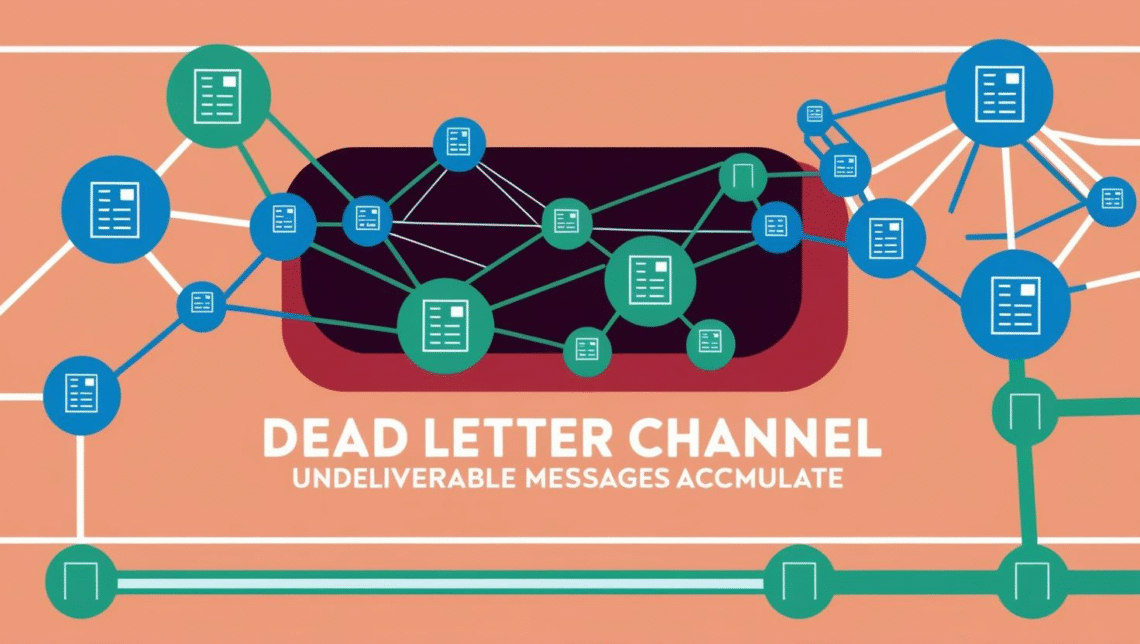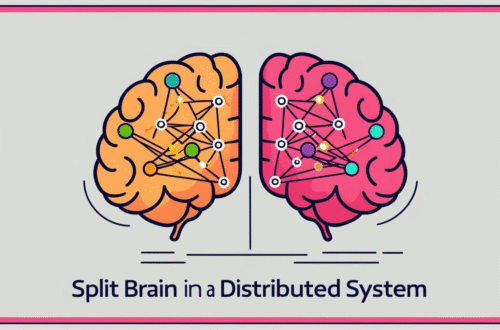
Dead Letter Channel: Handling Undeliverable Messages
Reliable message delivery is fundamental in distributed backend systems. However, not all messages succeed on the first attempt. Network issues, malformed payloads, or downstream service errors may prevent successful processing. Unhandled failures risk message loss, inconsistent state, and cascading errors. To mitigate this, backend engineers implement a Dead Letter Channel. This architectural pattern captures undeliverable messages for later inspection, recovery, or redelivery. Understanding and applying the Dead Letter Channel pattern is essential for building fault-tolerant, maintainable systems.
Understanding the Dead Letter Channel Pattern:
A Dead Letter Channel (DLC) is a dedicated message channel used to capture messages that cannot be processed successfully. It serves as a fault isolation mechanism and a tool for diagnosing system issues. The pattern originates from enterprise integration practices and is supported by most message brokers and queueing systems.
Messages are typically routed to the DLC when:
- They exceed a maximum retry threshold
- They are rejected due to validation failures
- Exceptions occur during downstream processing
A Dead Letter Channel is often implemented as a separate queue—commonly called a Dead Letter Queue (DLQ)—with specific routing rules configured in the broker or consumer. For instance, Amazon SQS, RabbitMQ, Kafka, and Azure Service Bus natively support dead-lettering.
Proper configuration includes:
- Setting retry limits (e.g., 3 delivery attempts)
- Defining error-handling policies (e.g., fail-fast on schema violation)
- Routing undeliverable messages to the DLQ
This pattern provides system resilience by decoupling failure processing from normal message handling, thus ensuring continued operation under partial failure.
Implementation Strategies in Common Messaging Systems:
Implementation of a Dead Letter Channel varies across messaging systems. Here are practical configurations for popular platforms:
RabbitMQ:
- Use a
x-dead-letter-exchangeargument on queues. - Configure a separate exchange and queue for the DLQ.
Amazon SQS:
- DLQs are associated with standard queues.
- Set the
Maximum Receivesattribute. - Messages exceeding this threshold are automatically moved to the DLQ.
Apache Kafka:
- Kafka lacks native DLQ support; use a custom implementation.
- Consumers catch processing errors and publish failed messages to a separate “dead-letter-topic.”
- Include headers for context:
original-topic,offset,error-reason.
Azure Service Bus:
- Built-in DLQ at the entity level (queue or subscription).
- Undeliverable messages are automatically sent to the DLQ.
- Developers can inspect and resubmit messages via SDK or Azure Portal.
When implementing a DLC, ensure message metadata includes:
- Correlation ID
- Original timestamp
- Failure reason
- Retry count
This metadata supports observability and debugging.
Operational Considerations and Monitoring:
Implementing a DLQ is not enough; ongoing operational practices are critical. Without active monitoring, DLQs become silent failure sinks. Backend engineers must design visibility and remediation workflows.
Recommended practices:
- Automated alerts: Monitor DLQ depth and publish metrics to observability platforms (e.g., Prometheus, CloudWatch).
- Dashboards: Visualize DLQ activity to detect trends or spikes.
- Message inspection tools: Provide internal tools for browsing, filtering, and reprocessing DLQ messages.
- Retention policy: Define how long messages remain in the DLQ before archival or deletion.
Additionally, engineers must decide how to process messages in the DLQ:
- Manual inspection for one-off failures
- Scheduled jobs for retrying transient errors
- Automated routing to alternate workflows (e.g., compensating actions)
Avoid retrying failed messages indefinitely. Apply exponential backoff and circuit breaker patterns to prevent system overloads.
Design Patterns for Resilient Message Processing:
Integrating a Dead Letter Channel into a backend architecture requires supporting design patterns that promote resilience.
Key patterns include:
- Retry with backoff: Retry transient failures with increasing delays.
- Poison message handling: Detect and isolate messages that consistently fail due to data issues.
- Idempotent processing: Ensure consumers handle message redelivery without duplicating side effects.
- Message tracing: Correlate message flow across services using trace IDs or context propagation.
When designing systems that use Dead Letter Channels:
- Make failure paths explicit
- Treat the DLQ as a first-class citizen in your architecture
- Align failure-handling logic with business impact
Design DLQ strategies based on the severity of failure scenarios:
- High-severity: Trigger incident workflows
- Medium-severity: Reprocess automatically with human review fallback
- Low-severity: Log and discard after analysis
These patterns ensure that message failures are handled deterministically and that operational teams can respond efficiently.
Conclusion and Key Takeaways:
A Dead Letter Channel is a vital component of robust asynchronous systems. It isolates and captures undeliverable messages, allowing continued service operation and simplified error recovery. To use this pattern effectively:
- Implement system-specific dead letter queues with correct routing rules
- Enrich messages with failure metadata for observability
- Actively monitor DLQs and integrate alerts into incident response
- Use complementary patterns like retries, backoff, and idempotency
Failing to handle undeliverable messages can lead to silent data loss and inconsistent state. By integrating a well-architected Dead Letter Channel, backend engineers build systems that degrade gracefully and recover reliably under failure. https://docs.aws.amazon.com/AWSSimpleQueueService/latest/SQSDeveloperGuide/sqs-dead-letter-queues.html


